Trojeručica
Our church was honoured to receive an official facsimile of Trojeručica in 2019. The original is the most important icon of the Serbian Orthodox Church residing in the monastery of Hilandar on Mount Athos, Greece. Trojeručica has been linked to miraculous events.
According to tradition, the original icon contains a silver replica of the hand of Saint John of Damascus. His hand was cut off after being falsely accused of treachery. After praying in front of an icon of the Virgin Mary and infant Jesus, his hand miraculously restored. He attached a silver replica of his hand to give thanks and so the icon became known as Trojeručica (three-handed).
An official, authentic facsimile has been produced and stamped by the monastery of Hilander for Lazarica. The icon is dedicated to MaJa and commemorates all children who have lost their lives from war, disease, natural causes, miscarriages and abortion.
The icon is also dedicated to all families who have experienced child bereavement. This occasion marks the first time an icon produced by the monastery of Hilandar comes to the UK.
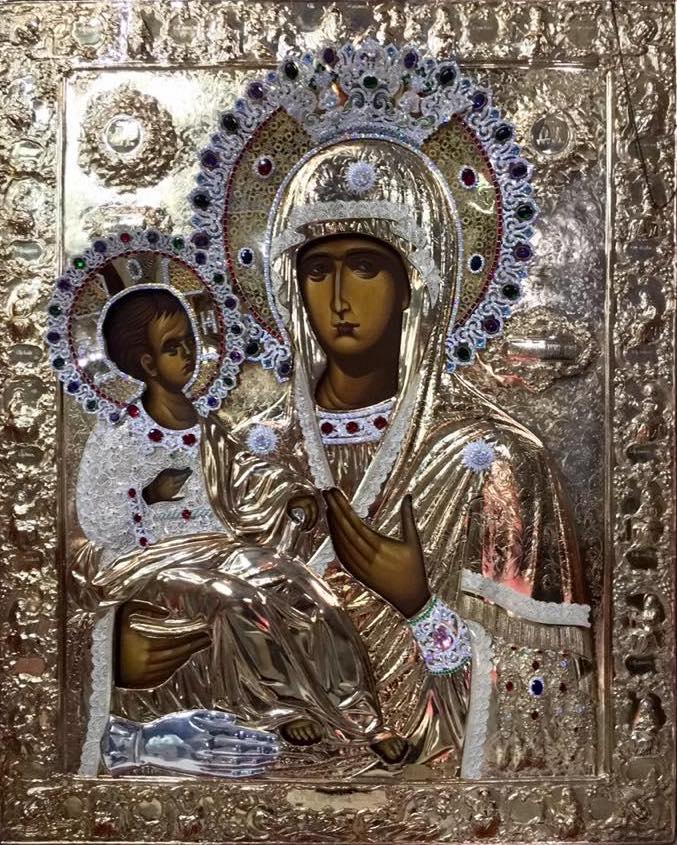
Relic of St John the Baptist
This cross contains a piece of skull from St John the Baptist. It was a gift from the Greek Orthodox Patriarch of Jerusalem, which was given to the church during the 2018 pilgrimage. The skull piece is visible in the reliquary beneath the feet of Christ which resembles the sun. St John’s feast day is the 20th January in the Julian calendar or 7th January in the modern-day Gregorian calendar.
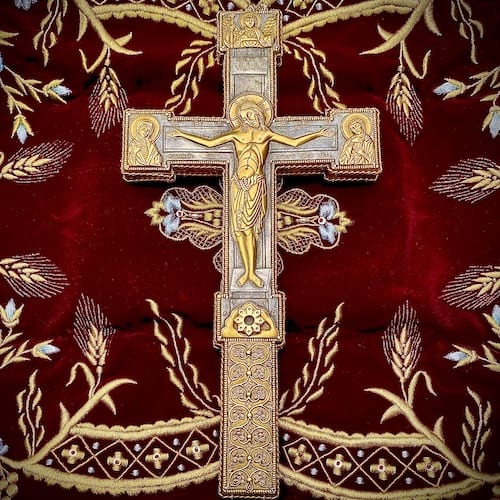
Relic of St Patrick
The reliquary in this chest contains a piece of bone of St Patrick. Many think of Patrick as a Catholic saint; however, he lived and carried out his work before the Great Schism of 1054 and so he is venerated as an Orthodox saint. His feast day is 30th March in the Julian calendar or 17th March in the modern-day Gregorian calendar.

Relic of St Elisabeth Feodorovna
Princess Elisabeth of Hesse and by Rhine was a granddaughter of Queen Victoria and the maternal great-aunt of Prince Phillip, Duke of Edinburgh. She became Grand Duchess Elizabeth Feodorovna upon here marriage to Grand Duke Sergei Alexandrovich of Russia. She became a nun following the assassination of her husband in 1905. Elisabeth was murdered by the Bolsheviks in 1918, her body was eventually laid to rest in Jerusalem. She was later canonised by the Russian Orthodox Church and is venerated by Serbian Orthodox Christians. St Elisabeth’s feast day is 11th October in the Julian calendar or 28th September in the modern-day Gregorian calendar.

Relic of St Gerasimus of the Jordan
Gerasimus lived in the 5th century AD. He established a monastery in Jordan and led a life of asceticism and prayer. Our church possesses a reliquary containing a piece of his jaw. Stn Gerasimus’ feast day is 17th of March in the Julian calendar or 17th March in the modern-day Gregorian calendar.
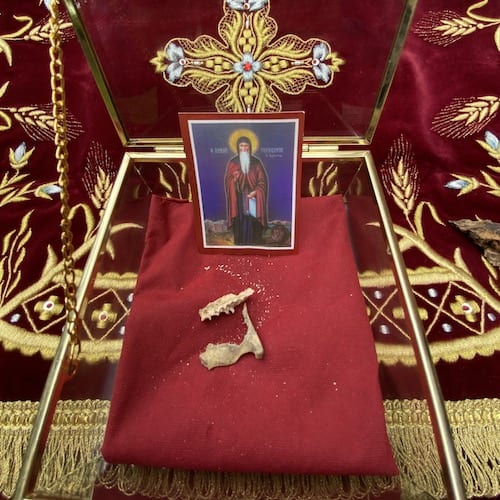
Relic of St Tryphon
St Tryphon of Campsada lived in the 3rd century. He acquired fame as a healer, especially of animals and was beheaded during the Decian persecution. Tryphon was canonised and his feast day is 14th February in the Julian calendar or 1st February in the modern-day Gregorian calendar.
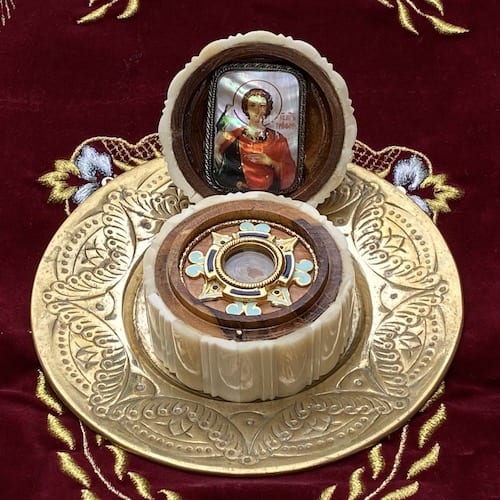
Relic of St Photina
Photina appears in chapter four of the Gospel of John as the Samaritan woman at the well who spoke to Jesus. She spread the new of her meeting, which is said to have brought many Christians to the faith. Photina was eventually taken to Emperor Nero to answer for her faith, which led to her torture and death after being thrown down a dry well. St Phontina’s feast day is 2nd April in the Julian calendar or 20th March in the modern-day Gregorian calendar.
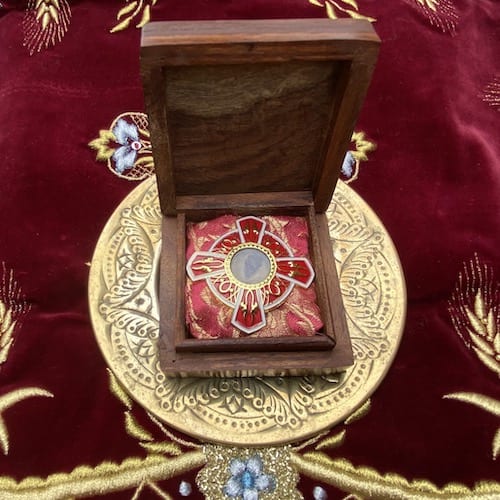
Relic of St Barbara
Known as the Great Martyr Barbara, she lived in the 3rd. century in present day Lebanon. Barbara was the daughter of a rich pagan and she secretly became a Christian. She was dragged before the prefect of her province and was protected from multiple attempts of torture via miracles. She was eventually beheaded by her father who in turn was struck down by lightning on the way home. St Barbara’s feast day is 17th December in the Julian calendar or 4th December in the modern-day Gregorian calendar.
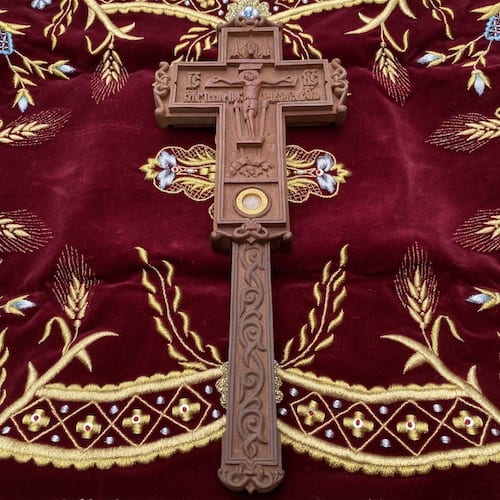
Relic of St Pantaleon
Pantaleon lived in the latter half of the 3rd century. Originally from Nicomedia, he gained a reputation for healing, which caught the attention of the Roman Emperor Diocletian who was persecuting Christians at the time. According to legend, Pantaleon survived multiple execution attempts before dying from a beheading. St Pantaleon’s feast day is 9th August in the Julian calendar or 27th July in the modern -day Gregorian calendar.

